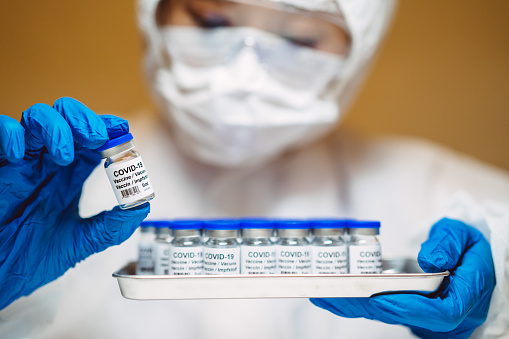Prostate cancer facts:
- Prostate cancer occurs when cells in the prostate are abnormal, and then grow and divide to form a tumor1
- Prostate cancer is the second most common type of cancer in men worldwide, with 1.4 million new cases reported in 20202
- Around one in eight men will be diagnosed with prostate cancer3
Risk factors for prostate cancer
There is no conclusive evidence regarding the causes of prostate cancer. However, those with a higher risk of developing prostate cancer include men who:
- Are over the age of 50
- Are obese
- Have a family history of the illness
Eating healthily and exercising regularly can help reduce your risk of prostate cancer.1
Detecting prostate cancer
Prostate cancer can go undetected for a long time. Generally symptoms don’t appear until the enlarged prostate affects bodily functions. Symptoms may include:
- Discomfort
- Constant feeling of needing to urinate
- Straining while urinating
- Blood in semen
- Feeling of never fully emptying your bladder
However, some symptoms can be caused by an enlarging of the prostate and not cancer.1 ,5
The two most common tests to screen for prostate cancer are:
- A blood test: The prostate specific antigen (PSA) is a substance found in the prostate. The PSA test measures the level of PSA in the blood. If the PSA level is high, it may indicate prostate cancer, an enlarged prostate, or a prostate infection, among others.5
- A digital rectal examination: This is done by a health care provider who will do a physical examination to feel the prostate for any abnormalities that could indicate cancer.5
Biopsies, blood tests, MRI scans, ultrasounds, bone scan, PET scan and physical exams can also be used to test for prostate cancer.1,5,6
Treating prostate cancer
Recommended treatment measures for prostate cancer normally depend on factors such as age, health and cancer stage. In some cases, treatment is not needed, and active surveillance might be recommended; using regular blood tests, exams and biopsies to monitor progress.1,5
If treatment is required, it may include internal or external radiation, biological, or hormone therapy; chemotherapy; or surgery to remove the prostate gland, surrounding tissue, and some lymph nodes.1 Your provider can give you more detailed information about your options and discuss them with you.
If you have questions about prostate cancer or any other type of cancer, contact your health care provider for advice and support.
1. Mayo Clinic. Prostate cancer. Symptoms and causes. https://www.mayoclinic.org/diseases-conditions/prostate-cancer/symptoms-causes/syc-20353087 Accessed June 24, 2022.
2. World Cancer Research Fund International. Prostate cancer statistics. https://www.wcrf.org/dietandcancer/cancer-trends/prostate-cancer-statistics Accessed June 24, 2022.
3. American Cancer Society. Key Statistics for Prostate Cancer. https://www.cancer.org/cancer/prostate-cancer/about/key-statistics.html Revised January 12, 2022.
4. Prostate cancer statistics. Cancer Research UK. https://www.cancerresearchuk.org/health-professional/cancer-statistics/statistics-by-cancer-type/prostate-cancer
5. NHS. Prostate cancer. https://www.nhs.uk/conditions/prostate-cancer/ Revised: October 18, 2021.
6. American Cancer Association. Screening Tests for Prostate Cancer. https://www.cancer.org/cancer/prostate-cancer/detection-diagnosis-staging/tests.html Revised January 4, 2021.
This article serves only as a reference and is intended for informational purposes only. Nothing in this article constitutes legal, tax, financial planning, health or medical advice including diagnosis or treatment. Always seek the advice of your physician or other qualified health provider with any questions you may have regarding a medical condition. References to third-party organizations or companies, and/or their products, processes or services, do not constitute an endorsement or warranty thereof. Products and services may not be available in all jurisdictions and are expressly excluded where prohibited by applicable law. All group insurance policies and health benefit plans contain exclusions and limitations. For costs and details of coverage, contact a Cigna representative.
All Cigna products and services are provided exclusively by or through operating subsidiaries of Cigna Corporation, including Cigna Health and Life Insurance Company, Life Insurance Company of North America, Cigna Global Insurance Company Limited, Evernorth Care Solutions, Inc. and Evernorth Behavioral Health, Inc., or through their affiliates and contracted companies.
In the U.S., Cigna Global Health Benefits® group medical and dental plans are insured or administered by Cigna Health and Life Insurance Company. In the U.S. and Canada, group life, accident and disability plans are insured or administered by Life Insurance Company of North America. In Canada, group medical, dental, vision, and evacuation plans are insured or administered by Cigna Life Insurance Company of Canada. Employee Assistance Programs are administered by or through Evernorth Care Solutions, Inc., Evernorth Behavioral Health Inc., Inc. or affiliates and contracted companies. In other jurisdictions, products and services are offered by or through Cigna Global Insurance Company Ltd. or affiliates and contracted companies. Products and services may not be available in all jurisdictions and are expressly excluded where prohibited by applicable law. The information on this site is only a general description of benefits. All insurance policies and group benefit plans contain exclusions and limitations. Please consult your licensed agent or contact Cigna for product availability, costs, and complete details of coverage.









































































































